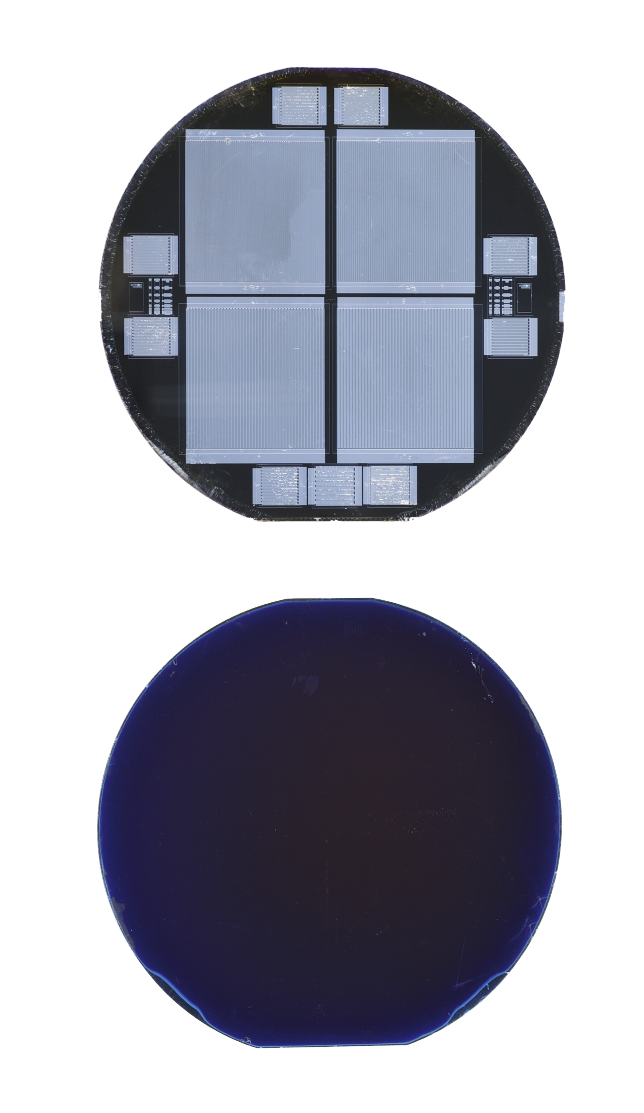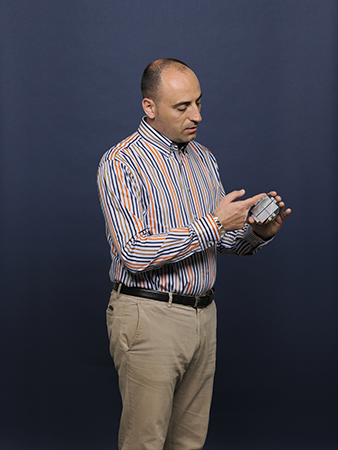Next generation: solar cells as construction materials
There are increasing numbers of solar panels on roofs, converting sunlight into low-cost electricity for households or businesses. In the future, you will very probably also be wearing solar cells. They will be integrated into the fabric of your rucksack, for instance, charging your laptop as you walk. Or your jacket will consist partly of solar cells, ensuring that your phone battery lasts for much longer.
|
“We need to have solar cells integrated everywhere in order to really make maximum use of renewable energy”
The next generation energy mix
“It's the next step forward: solar cells are not only being installed onto materials, but are also becoming part of materials. For example, by weaving them into fabrics or using them as the façade of a building. The construction material then not only ensures a robust structure, but also supplies energy”, says assistant professor Olindo Isabella from the Photovoltaic Materials and Devices group at TU Delft.
Isabella believes this opens up many more opportunities. “In the future, you'll have an energy mix in which tidal energy, combined heat and power pumps and wind and solar energy play a major role. As a result of the research into flexible, affordable but efficient solar cells, solar energy will begin to dominate, I expect. It will be possible to use the highly-efficient solar cells of the future almost anywhere.”
“It's the next step forward: solar cells are not only being installed onto materials, but are also becoming part of materials”
Flexible material
Where and how they will be used will be the work of designers. They will be developing the products and will depend on what scientists like Isabella are currently developing. “We are now looking into variants that are reliable and fitted onto flexible substrates. The aim is for them to be bendable without breaking, while also generating sufficient electricity.”
For this, Isabella is researching the new material barium disilicide. “It shows real promise, because it absorbs more sunlight than the much more expensive gallium arsenide. We expect to be able to achieve efficiency as high as 20%. What's more, it is relatively cheap to make.”
Barium disilicide
There are other materials available that absorb light, admits Isabella. But, in his view, they are less suitable for bendable and flexible applications. “Take crystalline silicon: although it has a higher efficiency (potentially, more than 27%), it's not so flexible as a clothing material. There are also thin-film variants. But they are either very expensive, or not stable or have low efficiency.”
According to Isabella, what makes barium disilicide attractive is that it is easy to manufacture on a large scale. “We use a well-established technique, that has also been applied to make flat panel displays. This technology works well and can be used on a large scale. I find this particularly valuable, as we are making smart use of existing knowledge in manufacturing. We are developing it further. It's also necessary, because if you want to enter the current solar cell market, you need to offer an attractive price and manufacture on a large scale.”
Isabella came across barium disilicide when reading a publication about Japanese research into the material. “I was bowled over by surprise. The material has excellent properties because it absorbs sunlight effectively and is suitable for flexible applications. But we still need to conduct more research. For example, we are exploring the influence of oxygen. Barium readily binds with it, which we want to avoid. This is why we are applying thin layers to prevent oxidation.”

Sunlight is free energy
Isabella emphasises that the technology for converting light into electricity has become significantly cheaper and more efficient in recent years. “Solar panels are now affordable for consumers. They supply energy and save money.”
Since oil and gas are becoming depleted and because of their CO2 emissions, he expects to see a different energy mix in the future. It will involve all different kinds of energy generation, for example, via wind turbines or cold/heat storage. “I expect to see solar cells play a dominant and crucial role in that mix. Especially because they have rapidly become cheaper, are efficient and we are working on materials that can be applied almost anywhere.”
According to Isabella, the sky seems to be the limit. For example, roads incorporating solar cells are already being tested in various parts of the world. The same applies to see-though multi-functional windows that you can not only look through but that also to convert sunlight into electricity. “In the future, we will see these kinds of solar cell applications everywhere. They will be less conspicuous than solar panels because they are integrated into products and materials. Sunlight is free energy. We are learning to use it more effectively all the time.”
Traditional solar cells
Olindo Isabella, assistant professor Photovoltaic Materials and Devices at TU Delft, is also researching other solar cells. “We are developing crystalline silicon with partners that include TU Eindhoven, ECN, Tempress and Levitech”, he says. “In our faculty's Else Kooi Laboratory, we have already demonstrated efficiency in excess of 21 percentage on devices with a large surface area. We are not only conducting research on the solar cells, but also exploring how we can market them.”Text: Robert Visscher | Photo: Mark Prins | July 2017
 TU Delft scientists are working on a new generation of flexible solar cells. It will be possible to use them almost everywhere, including in clothes or construction materials. There is a serious need for this, because renewables will have to dominate our energy mix if we are to preserve our planet. To achieve that, we need more than the traditional solar cells we are familiar with on roofs. We need to have solar cells integrated everywhere in order to really make maximum use of renewable energy.
TU Delft scientists are working on a new generation of flexible solar cells. It will be possible to use them almost everywhere, including in clothes or construction materials. There is a serious need for this, because renewables will have to dominate our energy mix if we are to preserve our planet. To achieve that, we need more than the traditional solar cells we are familiar with on roofs. We need to have solar cells integrated everywhere in order to really make maximum use of renewable energy.